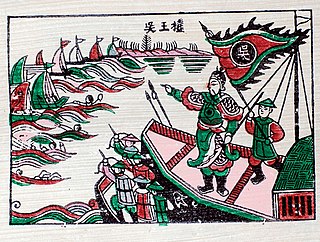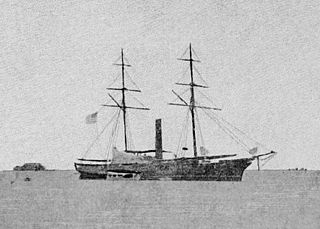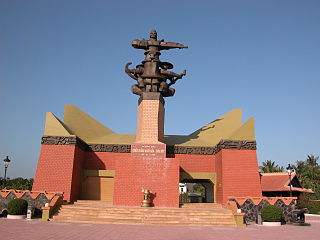 W
WThe Battle of Bạch Đằng was one of the greatest victories in Vietnamese military history. It was a navy battle between Đại Việt, commanded by Commander-in-Chief Prince Trần Hưng Đạo, and the invading army of the Yuan dynasty, commanded by general Omar Khan on the Bạch Đằng River. The Battle of Bạch Đằng was the last confrontation between Đại Việt and the Yuan dynasty. The battle took place at the Bạch Đằng River, near Ha Long Bay in present-day northern Vietnam. The battle was a tactical masterpiece of the same stature as the other battle at Bach Dang River.
 W
WAt the Battle of Bạch Đằng River in 938 near Hạ Long Bay in northern Vietnam the rebel Annamese forces, led by Ngô Quyền defeated the invading forces of the Southern Han state of China and put an end to centuries of Chinese imperial domination in Vietnam during the Five Dynasties and Ten Kingdoms period.
 W
WOperation Deckhouse Five was a United States Marine Corps (USMC) and Republic of Vietnam Marine Corps operation that took place from 6-15 January 1967 in the Mekong Delta, during the Vietnam War. "The ten-day sweep," reported the AP from its daily military roundup from Saigon, "proved unproductive."
 W
WOperation Game Warden was a joint operation conducted by the United States Navy and South Vietnamese Navy in order to deny Viet Cong access to resources in the Mekong Delta. Game Warden and its counterpart Operation Market Time are considered to be two of the most successful U.S. Naval actions during the Vietnam War.
 W
WThe Johnson South Reef Skirmish was an altercation that took place on 14 March 1988 between Chinese and Vietnamese forces over who would annex the Johnson South Reef in the Union Banks region of the Spratly Islands in the South China Sea.
 W
WThe Capture of Mỹ Tho on 12 April 1861 was an important allied victory in the Cochinchina campaign (1858–62). This campaign, fought between the French and the Spanish on the one side and the Vietnamese on the other, began as a limited punitive expedition and ended as a French war of conquest. The war concluded with the establishment of the French colony of Cochinchina, a development that inaugurated nearly a century of French colonial dominance in Vietnam.
 W
WThe Capture of Nam Định, a confrontation between the French and the Vietnamese, was one of the early engagements of the Tonkin Campaign (1883–86). In a brief campaign in the last week of March 1883, Commandant Henri Rivière captured the citadel of Nam Định, the second-largest city in Tonkin, with a flotilla of gunboats and a battalion of marine infantry.
 W
WThe Battle of the Paracel Islands was a military engagement between the naval forces of China and South Vietnam in the Paracel Islands on January 19, 1974. The battle was an attempt by the South Vietnamese navy to expel the Chinese navy from the vicinity.
 W
WThe bombardment of Qui Nhơn in 1861 was an attack by a United States Navy warship upon a Vietnamese held fort protecting Qui Nhơn in Cochinchina. United States forces under James F. Schenck went to Cochinchina to search for missing American citizens but were met with cannon fire upon arriving. In response to the attack the American warship bombarded the fort until it was reduced. The incident occurred during French and Spanish conquest of the nation.
 W
WThe Battle of Rạch Gầm-Xoài Mút was fought between the Vietnamese Tây Sơn forces and an army of Siam in present-day Tiền Giang Province on January 20, 1785. It is considered one of the greatest victories in Vietnamese history.
 W
WThe Battle of Thuận An was a clash between the French and the Vietnamese during the period of early hostilities of the Tonkin Campaign. During the battle a French landing force under the command of Admiral Amédée Courbet stormed the coastal forts that guarded the river approaches to the Vietnamese capital Huế, enabling the French to dictate a treaty to the Vietnamese that recognised a French protectorate over Tonkin. The French strike against the Vietnamese in August 1883, sanctioned by Jules Ferry's administration in Paris, did more than anything else to make a war between France and China inevitable, and sowed the seeds of the Vietnamese Cần Vương national uprising in July 1885.
 W
WThe Battle of Tonkin River was a major naval battle fought in northern Vietnam between the pirates of Shap Ng-tsai and the British Royal Navy with aid from the Qing Chinese navy and the Tonkinese. The 1849 expedition led to the destruction of Shap Ng-tsai's fleet and the loss of over 2,000 men. The battle occurred over a three-day period at the mouth of the Tonkin River, near present-day Hai Phong.
 W
WOn 18 November 2012, eleven Indonesian pirates hijacked MT Zafirah, a Malaysian tanker, in the South China Sea. The tanker crew was left by the pirates on a lifeboat in the sea two days after the hijacking but were subsequently rescued by Vietnamese fishing vessels on 21 November when their lifeboat was drifting around 118 nautical miles in the waters off Vietnam's southern Bà Rịa–Vũng Tàu Province. All the pirates managed to be tracked by Vietnam Coast Guard and Vietnam People's Navy with information provided by Malaysian based International Maritime Bureau and Singaporean based RECAAP, which led to their arrest after a brief of standoff near Vũng Tàu port.